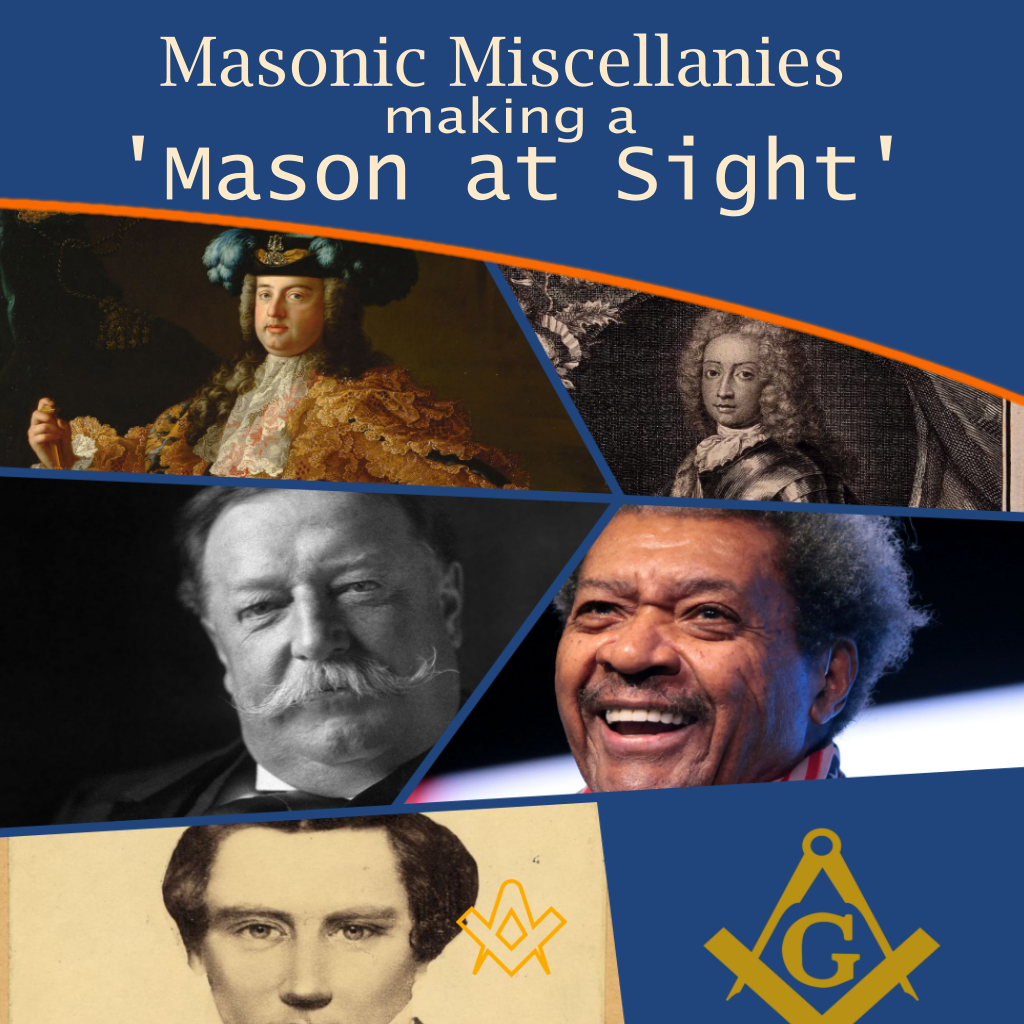What does it mean to make a ‘Mason at sight’?
“In Freemasonry, a ‘Mason at sight’, or ‘Mason on sight’, is a non-Mason who has been initiated into Freemasonry and raised to the degree of Master Mason through a special application of the power of a Grand Master.
“The process of making a Mason at sight was listed in ‘The Manual of the Lodge’ by Albert Mackey as the eighth of his ‘Twenty-Five Landmarks of Freemasonry’.
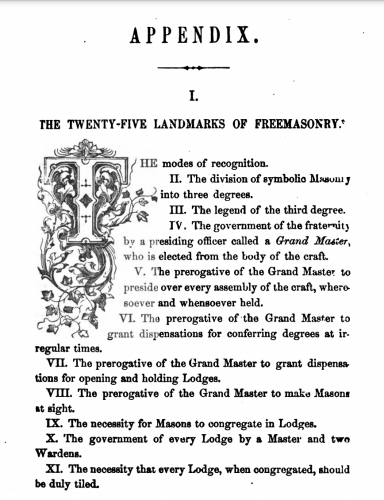
The method for raising a person to Master Mason through the rare process of recognizing him a Mason at sight has the Grand Master creating a new lodge for the single purpose of initiating the candidate.
This ‘occasional lodge’ is then dissolved when the reason for its creation – the initiation of the candidate – has been completed.
However, while the process of recognizing a Mason at sight usually involves this procedure, Masonic historian Louis L. Williams has observed that ‘using his unique and unquestionable power, the Grand Master could pretty well proceed as he might see fit’ such as simply decreeing the individual to be a Master Mason.
Early instances in the history of speculative Masonry, in which a man has been made a Mason at sight, include the raising of Francis Stephen, Duke of Lorraine, in 1731 at Houghton Hall, fourteen years before his accession as Holy Roman Emperor, and of Frederick, Prince of Wales in 1737.
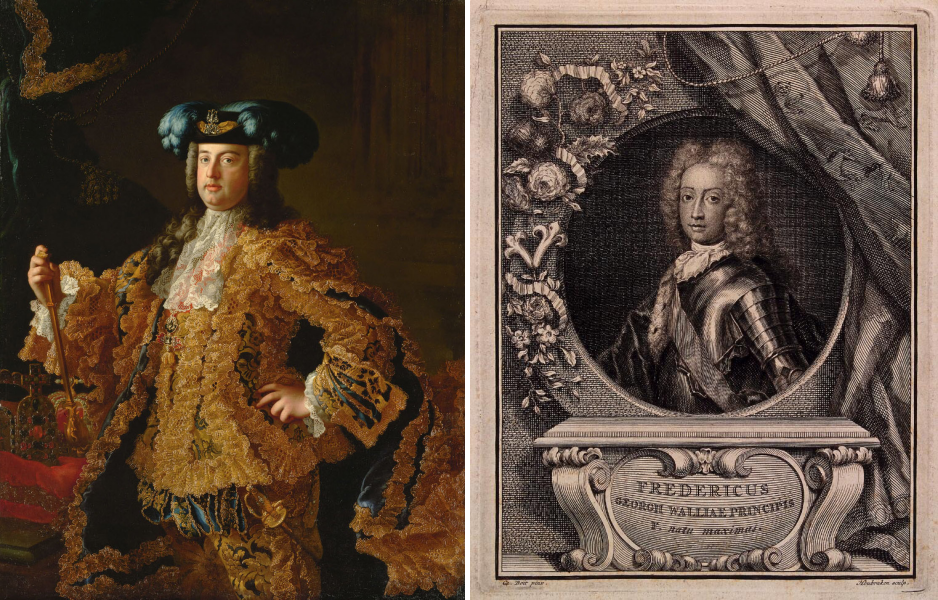
left: Francis Stephen, Duke of Lorraine. Painting by Martin van Meytens – Kunsthistorisches Museum Wien, Bilddatenbank.,
Right: Frederick Prince of Wales. Engraving by J. Houbraken after C. Boit, ca. 1727..
IMAGE LINKED: wikimedia and wellcome Attribution 4.0 International (CC BY 4.0)
William Howard Taft, [27th President of the United States] was recognized as a Mason at sight by an occasional lodge created for that purpose on February 18, 1909, a few weeks prior to his inauguration.
The lodge was convened at about 4:00 p.m. at the Scottish Rite Cathedral in Cincinnati by Charles Hoskinson, the Grand Master of Ohio, and consisted of him and William B. Mellish. He dissolved it after 6:00 p.m.
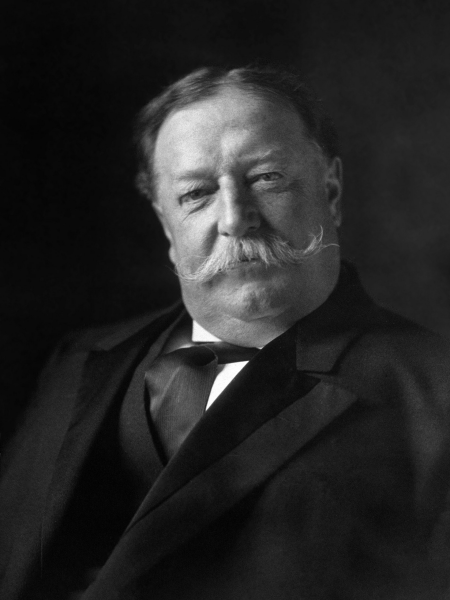
William Howard Taft, 27th President of the United States, circa 1909. Library of Congress Digital Archives.
IMAGE LINKED: wikimedia Attribution 4.0 International (CC BY 4.0)
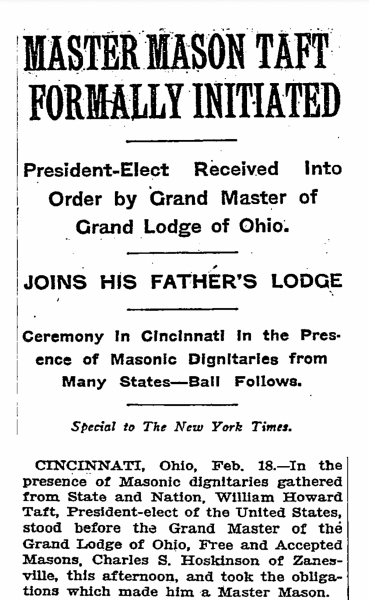
“Master Mason Taft Formally Initiated”, New York Times. February 19, 1909.
Image via https://timesmachine.nytimes.com/timesmachine/1909/02/19/101816317.pdf
Other notable persons who have been made a Mason at sight include Joseph Smith, founder of the LDS Church; Don King, who was raised by Grand Master Odes J. Kyle Jr. of the Most Worshipful Prince Hall Grand Lodge of Ohio; and General Douglas MacArthur, who was raised by the Grand Master of the Grand Lodge of the District of Columbia.
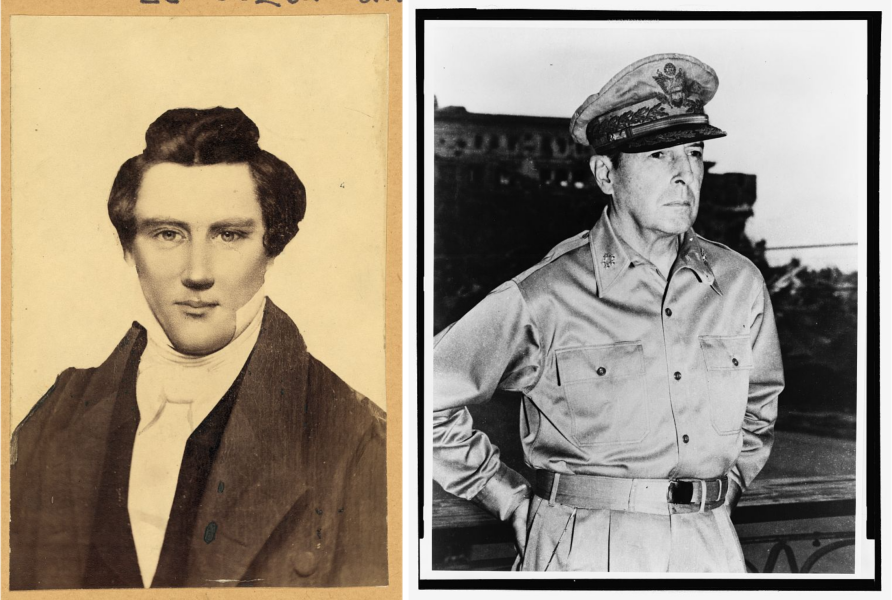
Carson, W. B., photographer. (ca. 1879) Joseph Smith / photo, W.B. Carson, Peoria, Ill. , ca. 1879. [Photograph] Retrieved from the Library of Congress
(1945) Gen. Douglas Macarthur, 1945. [Photograph] Retrieved from the Library of Congress
IMAGE LINKED: Library of Congress Attribution 4.0 International (CC BY 4.0)
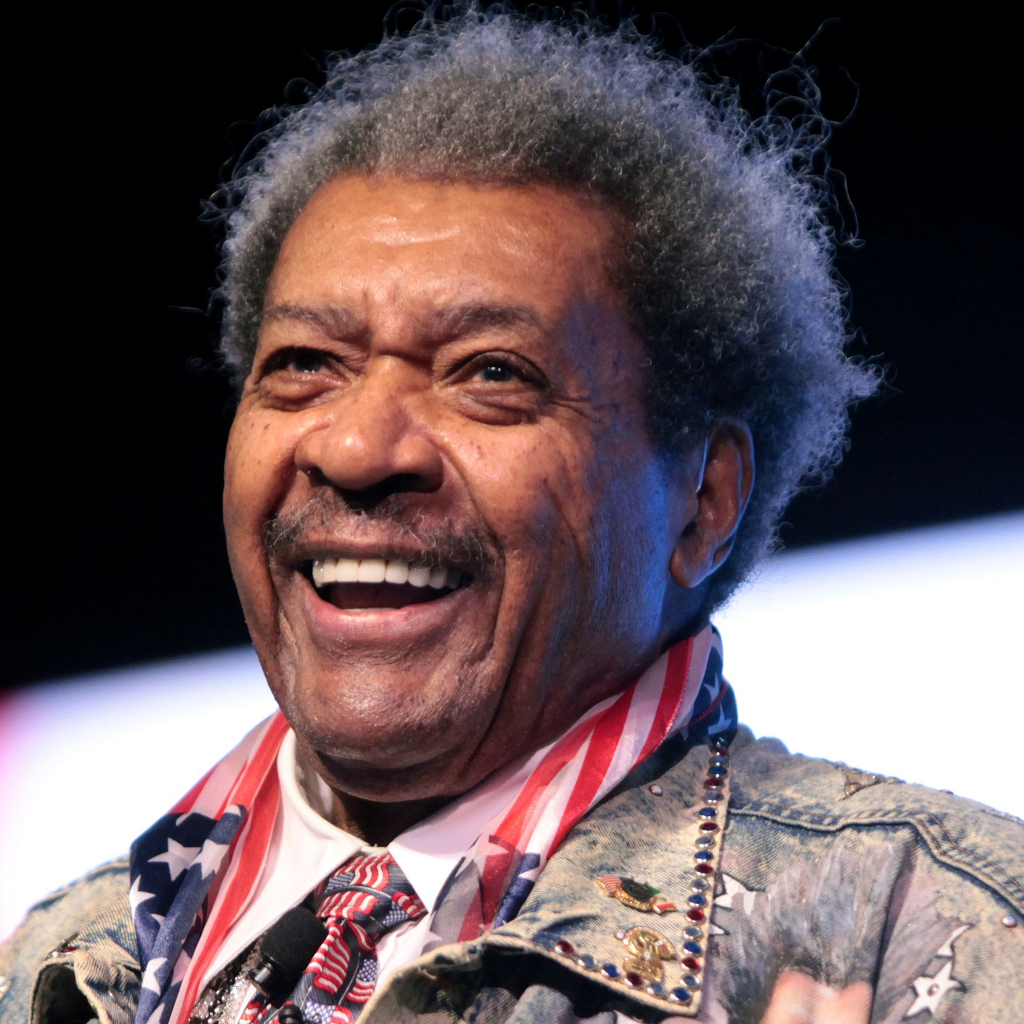
Don King. Photo: Gage Skidmore,
IMAGE LINKED: Library of Congress Attribution 4.0 International (CC BY 4.0)
Further Reading:
Article – Making a Mason at Sight: The Case of President-Elect Taft The Scottish Rite Museum and Library Blog.
Article – “Master Mason Taft Formally Initiated” (PDF). New York Times. February 19, 1909.
Recent Articles: Masonic Miscellanies
 Masonic Miscellanies - The Amulet of the Ladder Explore the cosmic significance of the Ladder in ancient Egyptian mythology through Wallis Budge's "Egyptian Magic." Discover how this profound symbol bridges the mortal and divine, encapsulating the Egyptians' fervent afterlife aspirations with a blend of myth, magic, and material culture. Dive into the celestial ascent of Osiris and mortal souls. |
 Masonic Miscellanies - Adulterine Gilds Guilds, the associations that shaped medieval European society, were more than just organizations of artisans and merchants. They played a vital role in the economic and social development of towns and cities. This exploration delves into the intriguing concept of adulterine gilds and their interconnectedness with guilds, offering insight into the significance of legal authorization and recognition in medieval Europe. |
 Masonic Miscellanies - Masonic Orb Discover the fascinating world of Masonic ball watch fobs, intricately crafted with tiny pyramids that form a cross when opened. These decorative accessories were all the rage in the late 1800s and early 1900s, and they still hold a certain allure today. Explore the different varieties and symbols found on these unique pieces that carry deep Masonic meaning. |
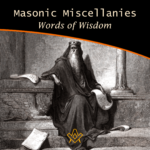 Masonic Miscellanies – Words of Wisdom Uncover timeless wisdom from King Solomon to Albert Pike in our latest Masonic Miscellanies, a treasure trove of insights for Masons. Journey through the ages and glean inspiring sayings, reflecting on their profound influence on Masonic principles. An enriching read for the enlightened. |
 Masonic Miscellanies - Symbolism of the Right Hand Unlock the enigmatic realm of Freemasonry as we delve into its age-old symbols, rituals, and philosophies. This thought-provoking exploration, drawn from Mackey's Revised Encyclopedia of Freemasonry, focuses on the iconic 'right hand' symbol - its rich history, universality, and profound significance. |
 Masonic Miscellanies - Order of the Secret Monitor Unveil the mystery of Freemasonry with 'The Order of the Secret Monitor'. Discover this lesser-known appendant order, its unique rituals, and the profound teachings it offers. Explore the bonds of friendship and brotherhood it fosters, all wrapped in an intriguing cloak of mystery. Your journey into the depths of Masonic wisdom begins here. |
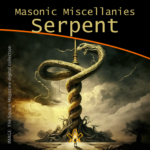 Masonic Miscellanies - The Symbol of the Serpent As a symbol, the serpent obtained a prominent place in all the ancient initiations and religions. |
 Masonic Miscellanies - The Four Veils in Royal Arch Masonry What are the four veils in Royal Arch Masonry? And what is the 'Ceremony of Passing the Veils'? Although common throughout Scotland, Ireland and the United States, it is mostly unknown in England, presently only worked in the Province of Bristol. ( and by dispensation ) |
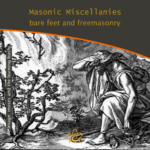 Masonic Miscellanies - Bare feet and Freemasonry A candidate for initiation into a Masonic Lodge often finds the requirements which he/she must fulfil somewhat odd. The mode of preparation often remains a puzzle, since the ritualistic explanation is not offered in full. Why are we 'slipshod' or "bare-footed" in Masonic Ritual? |
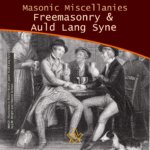 Masonic Miscellanies – Freemasonry and Auld Lang Syne Millions of people throughout the world will sing Auld Lang Syne to see out the Old Year. Few will know all the words, fewer still know what they mean, or that there is a link to Freemasonry. |
 Masonic Miscellanies - The Mosaic Pavement - why mosaic, why pavement? We are all familiar with the black and white chequered flooring of the Masonic lodge but where did it originate? There are a few theories… |
 Masonic Miscellanies – Masonic Master's Carpets Have you got a magic "Masonic Master's Carpet" in your lodge? I say 'magic' with my tongue firmly in my cheek because (as far as I know) these fabulous works of art don't bestow any mystical powers but can bestow some educational ones! However, considering their possible value today, they may magic up some interest (or funds). |
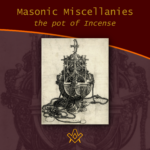 Masonic Miscellanies – The Pot of Incense Just when the pot of incense became an emblem of the third section of the Sublime Degree can not be stated with certainty. It is, apparently, an American invention or addition. But what does it symbolise? |
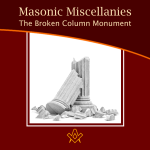 Masonic Miscellanies - The Broken Column Monument The story of the broken column was first illustrated by Amos Doolittle in the "True Masonic Chart" by Jeremy Cross, published in 1819. |
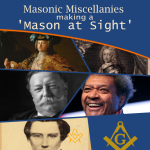 Masonic Miscellanies - Making a 'Mason at Sight' What does it mean to make a 'Mason at sight', and who was made one? |
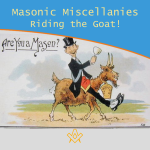 Masonic Miscellanies - Riding the Goat! Many Freemasons will have come across the phrase 'riding the goat', and will no doubt have been the butt of a joke about it (sorry, I couldn't resist!) But what does it mean and where did the phrase come from? |
 Masonic Miscellanies - What are the 'three dots'? Three dots or points in an upright triangular shape ∴ is most commonly known as the 'therefore' sign – so why is it used in Freemasonry? |
 Masonic Miscellanies - Keep Within Compass This month we discover a series of allegorical prints warning us to "Keep within Compass and you shall be sure, to avoid many troubles which others endure." |
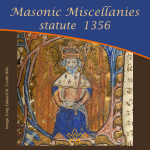 Masonic Miscellanies - statute 1356 Further to the reference in the article – The Builders - 6 - Free-Masons 'a statute was enacted against the Free-masons in 1356' – Regulations for masons who are hewers, on the one hand, and the light masons and setters on the other. |
 Masonic Miscellanies - An Anti-Masonic 'Apron'? The Anti-Masonic 'Apron' was created during the 1832 Presidential election in USA. It was not Ani-masonic. And it was not an apron. Read on to find out what and why it was created. |
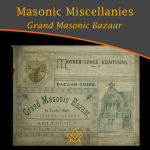 Masonic Miscellanies - Grand Masonic Bazaar (1895) Grand Masonic Bazaar (1895); to raise funds to clear the debt incurred by “Mother Kilwinning” in rebuilding their Lodge. |
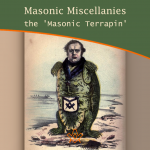 Masonic Miscellanies - the 'Masonic Terrapin' A satirical book from 1851 includes a bizarre caricature of a 'Masonic Terrapin' - all I can say is 'read on'… |
 Masonic Miscellanies - Masonic Bookplates You probably know what a bookplate is for, but did you know that the earliest known book mark/label dates from the reign of Amenhotep III in Egypt around 1391−1353 BCE?! |
 Masonic Miscellanies - Freemasonry & Bees Freemasonry & Bees - what's the buzz? The bee was among the Egyptians the symbol of an obedient people, because, says Horapollo, of all insects, the bee alone had a king. |
 Masonic Miscellanies - The mystery of the Tattooed Freemason In 1894, the body of a drowned man was found in the Bay of San Francisco - what they discovered was amazing. |
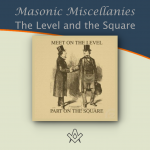 Masonic Miscellanies - The Level and the Square (A Poem) The Level and the Square (A Poem) - "We meet upon the Level, and we part upon the Square – |
 Masonic Miscellanies - The Mystic Tie What is the 'Mystic Tie'? Clue: it's not an item of neckwear! |
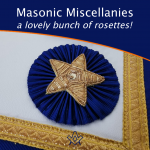 Masonic Miscellanies - A lovely bunch of rosettes! Where did the origin of the use of rosettes on Masonic aprons come from ? |
 Masonic Miscellanies - The Lodge of Sorrow The Lodge of Sorrow - Extracted General Ahiman Rezon, by Daniel Sickles, [1868] |
 Masonic Miscellanies - Memento Mori Memento Mori - a Masonic reminder to make your mark on the world |
 Masonic Miscellanies - A closer look at the Level and the Plumb-rule A closer look at the Level and the Plumb-rule |
 Masonic Miscellanies - The Symbolism of the Gloves The Symbolism of the Gloves and why Freemasons wear white gloves |
 Masonic Miscellanies - Will the real James Anderson please stand up? Will the real James Anderson please stand up? |
 Masonic Miscellanies - The Legend of the Third Degree The most important and significant of the legendary symbols of Freemasonry is, undoubtedly, that which relates to the fate of Hiram Abif. |
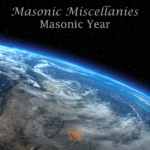 Masonic Miscellanies - Masonic Calendar Why do Freemasons use different 'years' to our regular calendar? |
 Masonic Miscellanies - What is a 'Lewis'? The English word 'Lewis' is a term belonging to operative Masonry, and signifies an iron cramp, which is inserted in a cavity prepared for the purpose in a large stone. |
 Masonic Miscellanies - From J.S.M. Ward Ever wondered why masons had to be 'free' or why we have a Tyler? |
masonic knowledge
to be a better citizen of the world
share the square with two brothers

click image to open email app on mobile device


